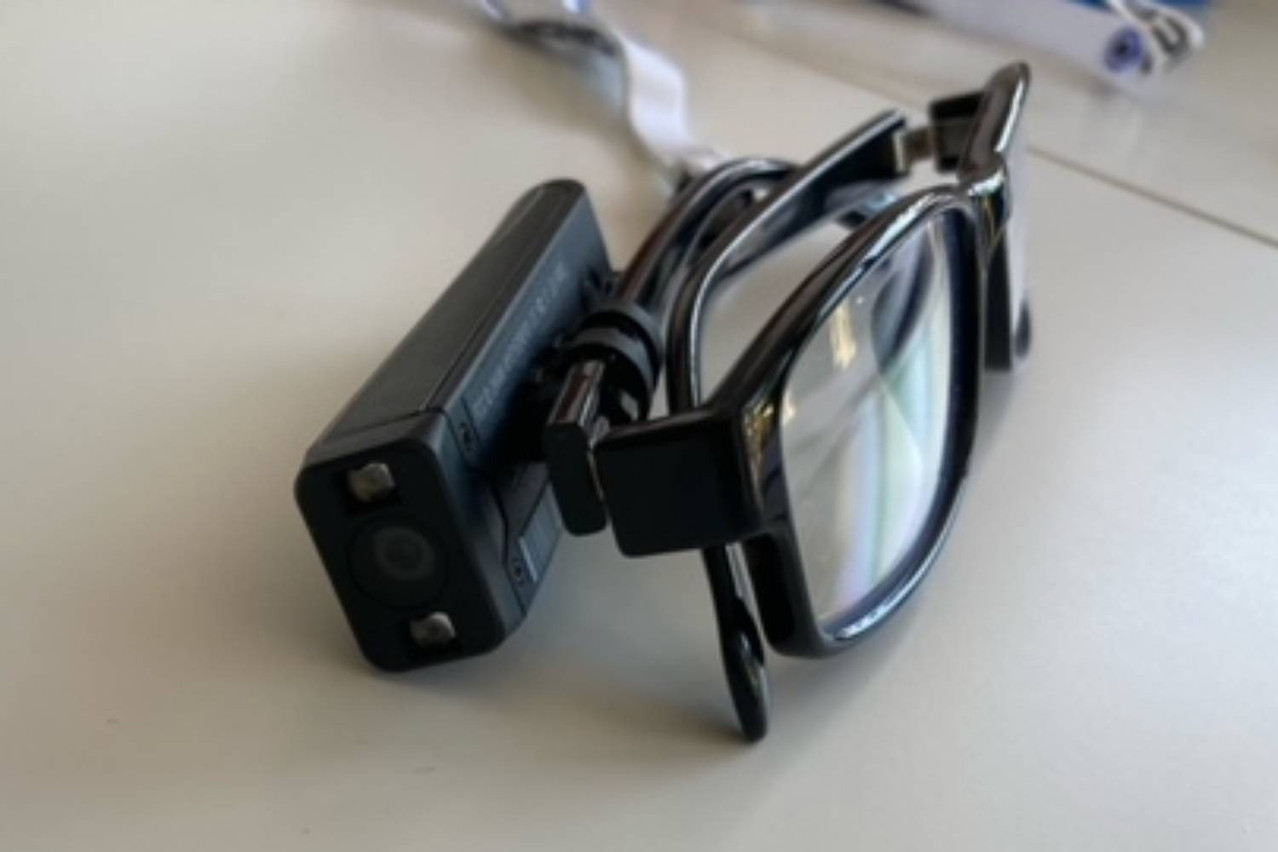There are 36m blind people in the world. Yet “our system is anything but adapted for the blind. The people concerned are not sufficiently informed about the devices available to help them,” says Aurélie Thuin, head of Lux Basse Vision.
The story begins when Ammon Shasua and Ziv Arinam created Mobileye. The application, which uses the power of computer vision to improve car safety, has been a huge success: used by more than 27 car manufacturers, it was sold to Intel for $15bn.
But it wasn’t enough to satiate the company’s Israeli co-founders, who realised that artificial intelligence technology could also help people with visual impairments. They founded Orcam in 2010. In 2013, the beta version of Orcam My Eye came to life and the first devices were marketed two years later. The sale of MobilEye in 2017 provided the opportunity to finalise the second version of the software: Orcam My Eye 2.
How it works
Orcam is a discreet, portable device that clips onto the user’s glasses frame. It uses a camera to capture images of the environment, then processes them using onboard artificial intelligence. The device can then communicate the information to the user via a small speaker or a wireless connection to an earphone or hearing aid. “Reading machines already existed, but they were too big to leave the house. Orcam doesn’t have this limitation,” says Aurélie Thuin.

Orcam My Eye 2 can be attached to any frame. Thanks to its camera and onboard AI, the device communicates information to the user via a loudspeaker. Photo: Hugo Hirsch / Maison Moderne
The application offers a multitude of functions, including instant and intelligent reading (asking for a precise part of a text), facial recognition, and identification of colours, barcodes and banknotes. It responds to simple, intuitive gestures and has a voice command. To activate it, simply say, “Hey Orcam.” The technology is easy to master, requiring just a few minutes’ training (or a few hours for the less experienced).
The device has a battery life of around three hours, so if you’re going out for a long time you’ll need an external battery. “There are always things that can be improved, such as integrating a navigation or environmental recognition system (...) The device is frequently updated, as long as it is connected to wifi and charging,” explains Thuin.
For those worried about personal data, the device has a very small memory and is only designed to recognise relatives (a maximum of ten). To do this, it has to photograph the individual several times, from different angles. No information circulates outside this memory.
Another service, Orcam Read, is designed for people with dyslexia, illiteracy or aphasia. Available in 25 languages, the portable reading machine uses a laser. Simply point and click for the device to decipher the scanned text.

The Orcam Read device helps people who are unable to read. Users scan the text they wish to consult and the device reads it aloud. Photo: Hugo Hirsch / Maison Moderne
Services available in Luxembourg
Visually impaired people can get full reimbursement for Orcam technology by completing the R20 long-term care insurance form. This is a good thing, as the device costs around €4,000.
Lux Basse Vision is the only partner of this technology in Luxembourg. “There’s a trade fair in Frankfurt, where every manufacturer presents its new products. That’s when I met Orcam, who were looking for distributors in the region,” explains the owner, who hails from Hauts-de-France.
Therapeutic filters, optical magnifiers, remote enlargers, reading machines... Thuin offers a whole range of other gadgets to relieve eye problems for everyone, sighted or blind.
A number of organisations provide support for people with visual impairments:
- The centre for the development of sight-related skills (CDV): its aim is to enable pupils to acquire maximum independence and complete their schooling despite their visual impairment. The centre also offers specialised courses for adults who are visually impaired or blind, as well as for anyone else who is concerned.
- The Orthoptic Service (SOP)
- The Fondation Lëtzebuerger Blannevereenegung, which improves the lot of blind and visually impaired people and defends their interests.
However, apart from these establishments, some audible traffic lights and a few Braille books, the resources available for blind people are still inadequate.
This story was first published in French on . It has been translated and edited for Delano.
